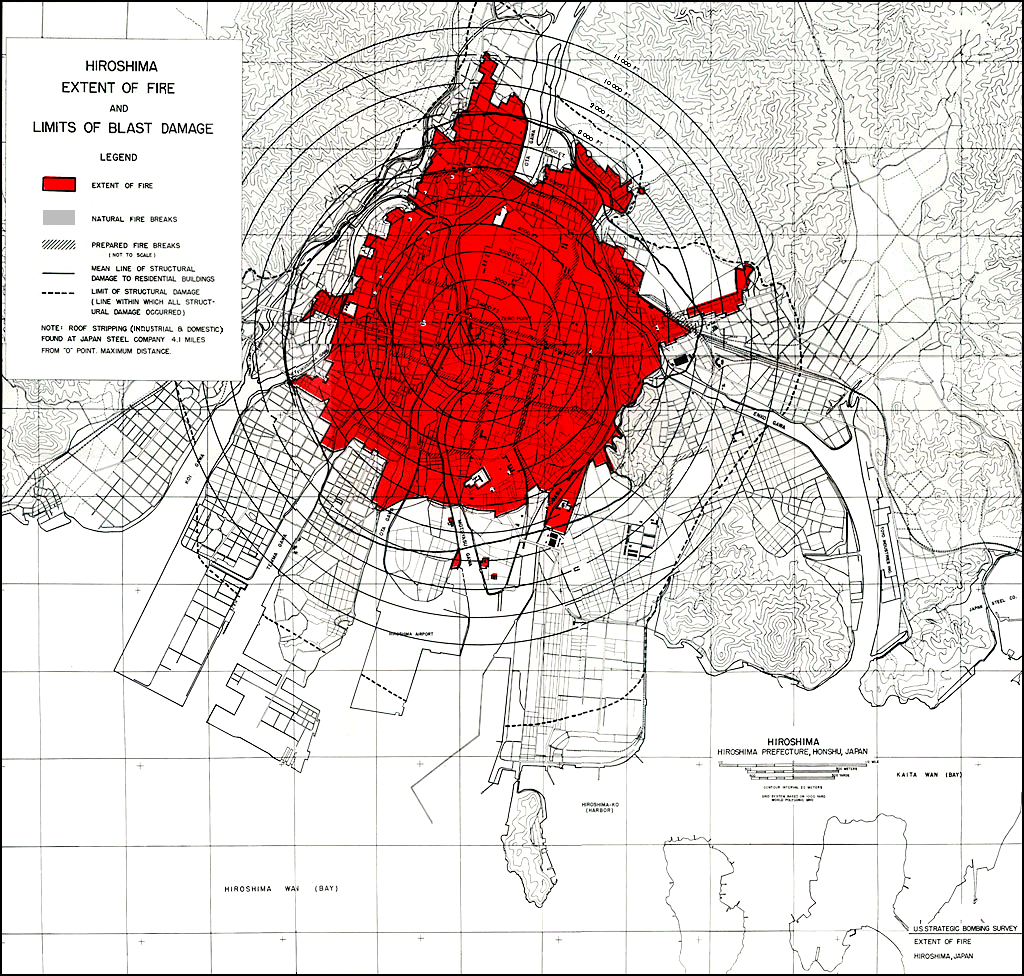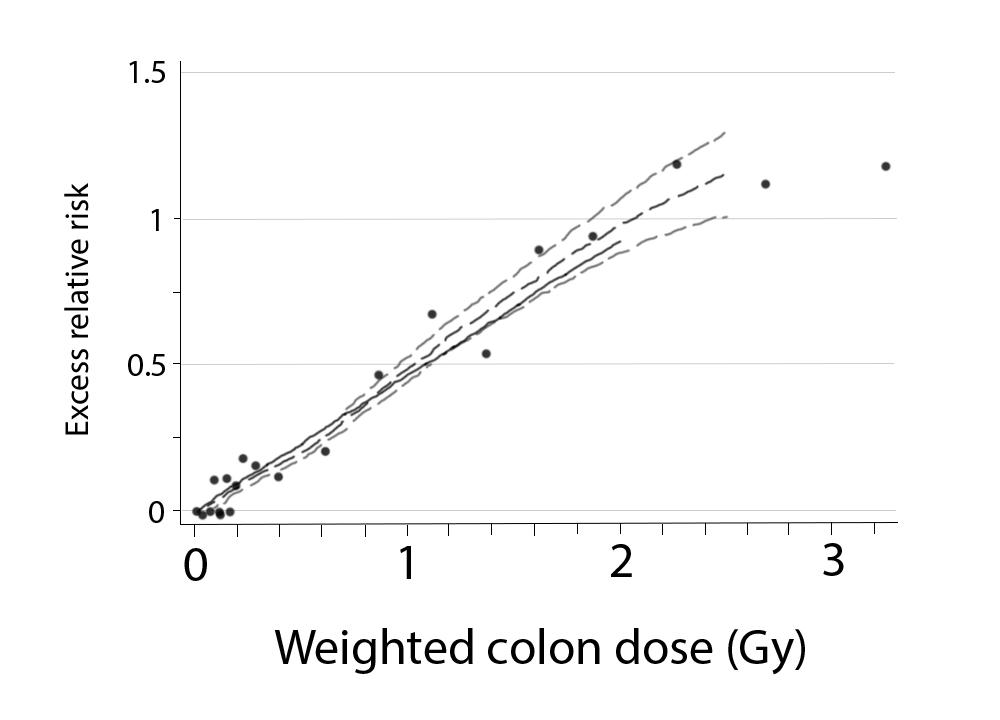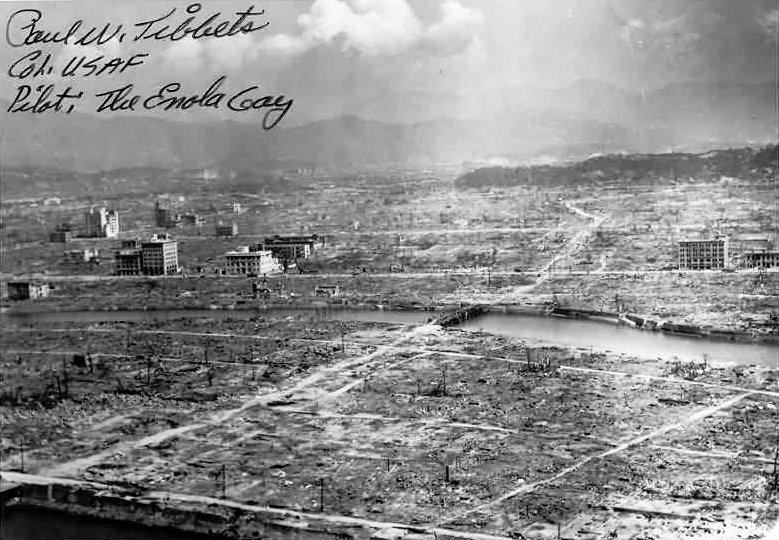What are the long term health effects from the two atomic bombs dropped on human populations?

Following the atomic explosion over Hiroshima,
many survivors feared that nothing would grow on the decimated earth. By the time spring of 1946 arrived, the citizens of Hiroshima were surprised to find the landscape dotted with the blooming red petals of the oleander. The oleander flower, called the kyochikuto in Japanese, dispelled worries that the destroyed city had lost all its fertility and inspired the population with hope that Hiroshima would soon recover from the tragic bombing.
Now the official flower of Hiroshima, the oleander offers a beautiful symbol for the city as a whole; while some feared that the city and its population were irreparably destroyed—permanently cut off from normality by the effects of radiation—many would be surprised to learn of the limited long term health effects the nuclear attacks on Hiroshima and Nagasaki in August 1945 have had.
Within the first few months after the bombing... between 90,000 and 166,000 people died in Hiroshima, while another 60,000 to 80,000 died in Nagasaki.
Within the first few months after the bombing, it is estimated by the Radiation Effects Research Foundation (a cooperative Japan-U.S. organization) that between 90,000 and 166,000 people died in Hiroshima, while another 60,000 to 80,000 died in Nagasaki. These deaths include those who died due to the force and excruciating heat of the explosions as well as deaths caused by acute radiation exposure.
While these numbers represent imprecise estimates—due to the fact that it is unknown how many forced laborers and military personnel were present in the city and that in many cases entire families were killed, leaving no one to report the deaths—statistics regarding the long term effects have been even more difficult to determine.
Though exposure to radiation can cause acute, near-immediate effect by killing cells and directly damaging tissue, radiation can also have effects that happen on longer scale, such as cancer, by causing mutations in the DNA of living cells. Mutations can occur spontaneously, but a mutagen like radiation increases the likelihood of a mutation taking place. In theory, ionizing radiation can deposit molecular-bond-breaking energy, which can damage DNA, thus altering genes. In response, a cell will either repair the gene, die, or retain the mutation. In order for a mutation to cause cancer, it is believed that a series of mutations must accumulate in a given cell and its progeny. For this reason, it may be many years after exposure before an increase in the incident rate of cancer due to radiation becomes evident.

Among the long-term effects suffered by atomic bomb survivors, the most deadly was leukemia. An increase in leukemia appeared about two years after the attacks and peaked around four to six years later. Children represent the population that was affected most severely. Attributable risk—the percent difference in the incidence rate of a condition between an exposed population and a comparable unexposed one — reveals how great of an effect radiation had on leukemia incidence. The Radiation Effects Research Foundation estimates the attributable risk of leukemia to be 46% for bomb victims.
For all other cancers, incidence increase did not appear until around ten years after the attacks. The increase was first noted in 1956 and soon after tumor registries were started in both Hiroshima and Nagasaki to collect data on the excess cancer risks caused by the radiation exposure. The most thorough study regarding the incidence of solid cancer (meaning cancer that is not leukemia) was conducted by a team led by Dale L. Preston of Hirosoft International Corporation and published in 2003. The study estimated the attributable rate of radiation exposure to solid cancer to be significantly lower than that for leukemia—10.7%. According to the RERF, the data corroborates the general rule that even if someone is exposed to a barely survivable whole-body radiation dose, the solid cancer risk will not be more than five times greater than the risk of an unexposed individual.

Nearly seventy years after the bombings occurred, most of the generation that was alive during the attack has passed away. Now much more attention has turned to the children born to the survivors. Regarding individuals who had been exposed to radiation before birth (in utero), studies, such as one led by E. Nakashima in 1994, have shown that exposure led to increases in small head size and mental disability, as well as impairment in physical growth. Persons exposed in utero were also found to have a lower increase in cancer rate than survivors who were children at the time of the attack.
One of the most immediate concerns after the attacks regarding the future of both Hiroshima and Nagasaki was what health effects the radiation would have on the children of survivors conceived after the bombings. So far, no radiation-related excess of disease has been seen in the children of survivors, though more time is needed to be able to know for certain. In general, though, the healthfulness of the new generations in Hiroshima and Nagasaki provide confidence that, like the oleander flower, the cities will continue to rise from their past destruction.

Perhaps most reassuring of this is the view of the cityscapes themselves. Among some there is the unfounded fear that Hiroshima and Nagasaki are still radioactive; in reality, this is not true. Following a nuclear explosion, there are two forms of residual radioactivity. The first is the fallout of the nuclear material and fission products. Most of this was dispersed in the atmosphere or blown away by the wind. Though some did fall onto the city as black rain, the level of radioactivity today is so low it can be barely distinguished from the trace amounts presents throughout the world as a result of atmospheric tests in the 1950s and 1960s. The other form of radiation is neutron activation. Neutrons can cause non-radioactive materials to become radioactive when caught by atomic nuclei. However, since the bombs were detonated so far above the ground, there was very little contamination—especially in contrast to nuclear test sites such as those in Nevada. In fact, nearly all the induced radioactivity decayed within a few days of the explosions.
Today, the liveliness of the cities of Hiroshima and Nagasaki serves as a reminder not only of the human ability to regenerate, but also of the extent to which fear and misinformation can lead to incorrect expectations. After the bombings of Hiroshima and Nagasaki, many thought that any city targeted by an atomic weapon would become a nuclear wasteland. While the immediate aftermath of the atomic bombings was horrendous and nightmarish, with innumerable casualties, the populations of Hiroshima and Nagasaki did not allow their cities to become the sort of wasteland that some thought was inevitable. This experience of can serve as lesson in the present when much of the public and even some governments have reacted radically to the accident in Fukushima--in the midst of tragedy, there remains hope for the future.
Further Reading:
- The Radiation Effects Research Foundation site outlines the results of numerous studies regarding the survivors of Hiroshima and Nagasaki.
- The Hiroshima Peace Memorial Museum site discusses the recovery efforts of the city of Hiroshima after the atomic bombing.
- A study by Hirosoft International analyzes the incidence of solid cancer in atomic bomb survivors.
- In The Children of Atomic Bomb Survivors: A Genetic Study, the authors overview a number of studies on children of parents exposed to atomic bombs.
Bibliography:
D. L. Preston, E. Ron, S. Tokuoka, S. Funamoto, N. Nishi, M. Soda, K. Mabuchi, and K. Kodama. (2007) Solid cancer incidence in atomic bomb survivors: 1958-1998. Radiation Research 168:1, 1-64
E. J. Grant, K Ozasa, D. L. Preston, A Suyama, Y Shimizu, R Sakata, H Sugiyama, T-M Pham, J Cologne, M Yamada, A. J. De Roos, K. J. Kopecky, M. P. Porter, N Seixas and S Davis. (2012) Effects of Radiation and Lifestyle Factors on Risks of Urothelial Carcinoma in the Life Span Study of Atomic Bomb Survivors. Radiation Research 178:1, 86-98
"Radiation Health Effects." - Radiation Effects Research Foundation. Radiation Effects Research Foundation, 2007. Web. 29 July 2012.
W. F. Heidenreich, H. M. Cullings, S. Funamoto and H. G. Paretzke. (2007) Promoting Action of Radiation in the Atomic Bomb Survivor Carcinogenesis Data?. Radiation Research 168:6, 750-756
